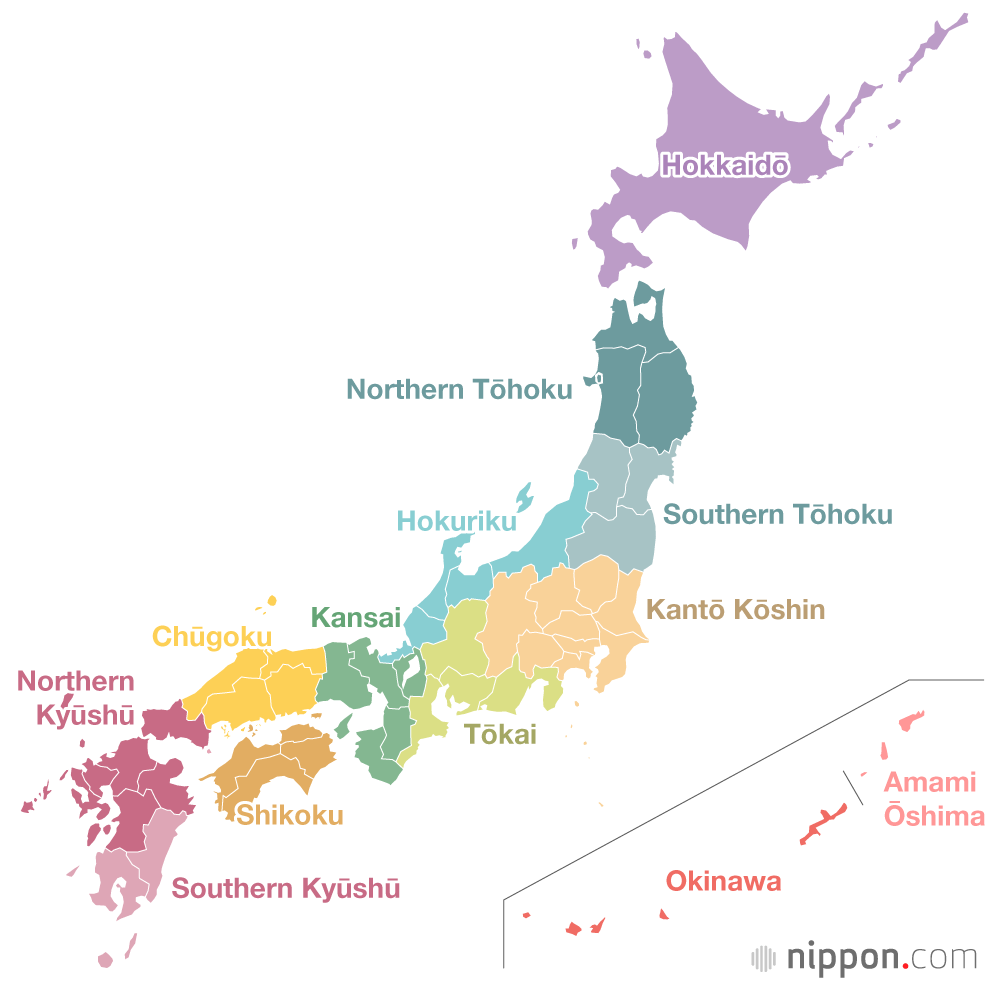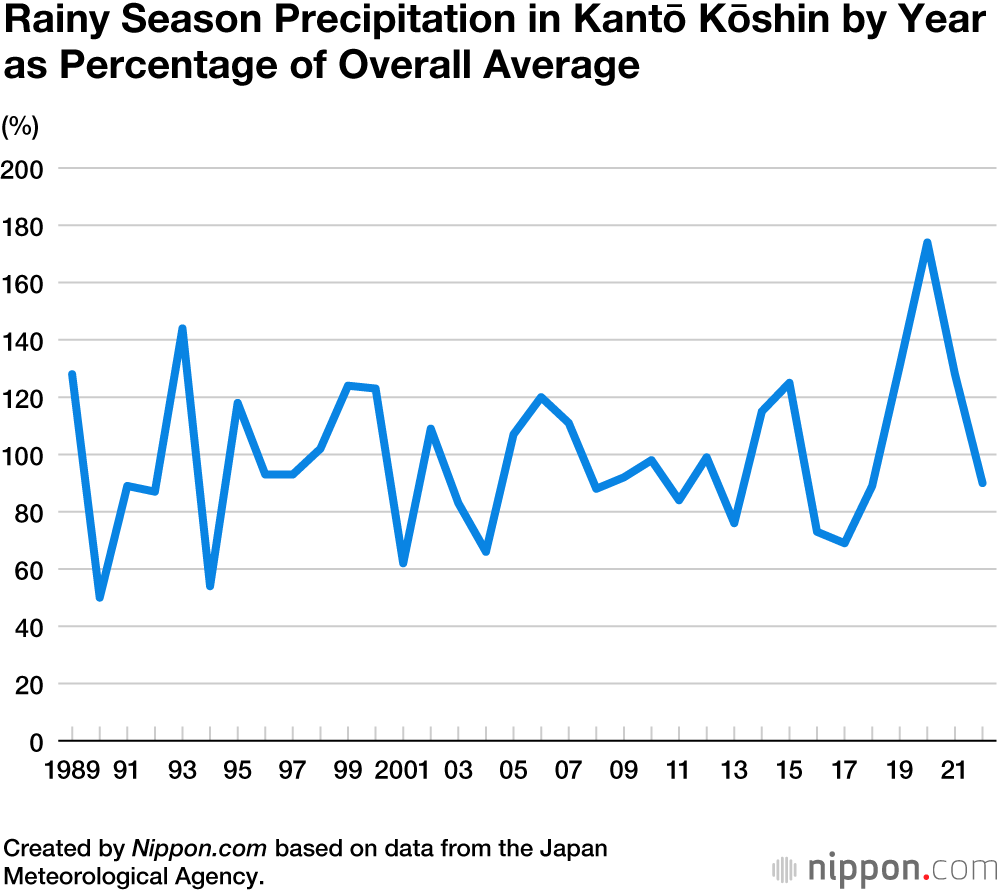
Another Rainy Season Arrives in Japan
Society Disaster Work- English
- 日本語
- 简体字
- 繁體字
- Français
- Español
- العربية
- Русский
On May 18, Japan’s 2023 tsuyu rainy season started in Okinawa and Amami Ōshima. Much of the country, from Kyūshū to Tōkai followed on May 29, and the rest (excluding Hokkaidō) is expected to follow soon.
The chart below shows the beginning and end of the rainy season in various regions of Japan in 2022, as well as the beginning and end in an average year. As many areas experienced intense heat from late June last year, the end of tsuyu was declared in one region after another from June 27 to 29, from southern Kyūshū to southern Tōhoku, marking the shortest rainy season on record.
However, for the finalized statistics released in September, the end of the rainy season from southern Kyūshū to the Kantō Kōshin region was revised to late July, while it was declared that the exact period of the rainy season could not be determined for Hokuriku and Tōhoku. The hot weather from late June was judged to have been just a pause in the rainy season.
2022 Rainy Season Dates and Average Annual Dates
| Start of Rainy Season 2022 (Average Starting Date) |
End of Rainy Season 2022 (Average Ending Date) |
|
|---|---|---|
| Okinawa | May 4 (May 10) |
June 20 (June 21) |
| Amami Ōshima | May 5 (May 12) |
June 22 (June 29) |
| Southern Kyūshū | June 10 (May 30) |
July 22 (July 15) |
| Northern Kyūshū | June 11 (June 4) |
July 22 (July 19) |
| Shikoku | June 11 (June 5) |
July 22 (July 17) |
| Chūgoku | June 11 (June 6) |
July 26 (July 19) |
| Kansai | June 14 (June 6) |
July 23 (July 19) |
| Tōkai | June 14 (June 6) |
July 23 (July 19) |
| Kantō Kōshin | June 6 (June 7) |
July 23 (July 19) |
| Hokuriku | June 6 (June 11) |
- (July 23) |
| Southern Tōhoku | June 6 (June 12) |
- (July 24) |
| Northern Tōhoku | June 6 (June 15) |
- (July 28) |
Created by Nippon.com based on data from the Japan Meteorological Agency. The end of the 2022 rainy season could not be determined in Hokuriku, Southern Tōhoku, and Northern Tōhoku.
In an average year, the rainy season begins in early June in areas from northern Kyūshū to Kantō Kōshin, including the cities of Tokyo, Osaka, Nagoya, and Fukuoka, and ends around July 20. Precipitation for this period is around 500 to 600 millimeters in northern Kyūshū and around 300 millimeters in the Kantō Kōshin and Tōkai regions.
Precipitation Varies from Year to Year
The figure below shows the amount of precipitation in the Kantō Kōshin region over the past 30 years in comparison to the amount in an average year. It can be seen that the amount varies considerably from year to year. For example, the rainy season in 1990 saw only half the normal amount of rainfall. In contrast, the 2020 rainy season stretched until August 1, with 1.7 times the normal amount of precipitation.
(Translated from Japanese. Banner photo © Pixta.)

